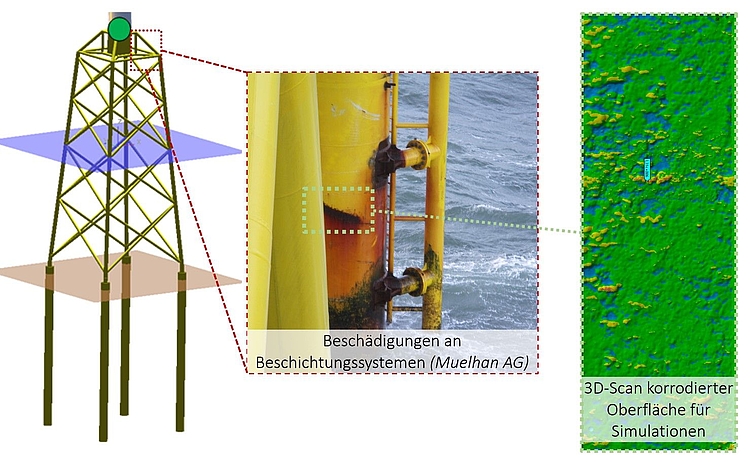Influence of corrosive media on the fatigue strength of offshore wind energy support structures

| Led by: | Elyas Ghafoori |
| Team: | Sulaiman Shojai |
| Year: | 2020 |
| Funding: | AiF – Projekt gefördert durch das BMWi |
| Duration: | 01.12.2020 – 31.05.2023 |
As the use of the seas progresses and the focus on costs increases, there is a growing interest in optimized design of the supporting structures of offshore wind turbines (OWT). The use of modern fatigue strength concepts opens up considerable savings potentials, as the development of OWT reaches technological limits. This bears the risk of more frequent corrosion damage due to the reduction of reserves in the dimensioning. It is therefore necessary to better quantify the risk of corrosion. In order to meet the increasing demand for energy from OWTs, more efficient and novel concepts such as the production of hydrogen from renewable electricity are necessary. The required structures will be more difficult to maintain due to the expected distance to the mainland. In the lead project, economic and technological aspects of the production of these energy carriers as well as the structures required for this will be examined. In this sub-project, maritime supporting structures are investigated with regard to fatigue strength under the influence of corrosion. Despite corrosion protection systems, it cannot be completely excluded. In existing regulations, corrosion is considered in the Wohler curve. Stress concentrations due to surface changes and changes in material behaviour are only considered empirically. In this project, notch stresses and material behaviour are investigated separately. The basis for the exact determination of the notch stresses are the potentials of the reverse engineering method, with which corroded surfaces are digitalized and transferred into FE-models for numerical investigations. Both basic material samples and welded samples are examined. The transferability to real structural dimensions is ensured on samples with large plate thicknesses. Finally, a reliability-based lifetime prediction tool will be developed.


